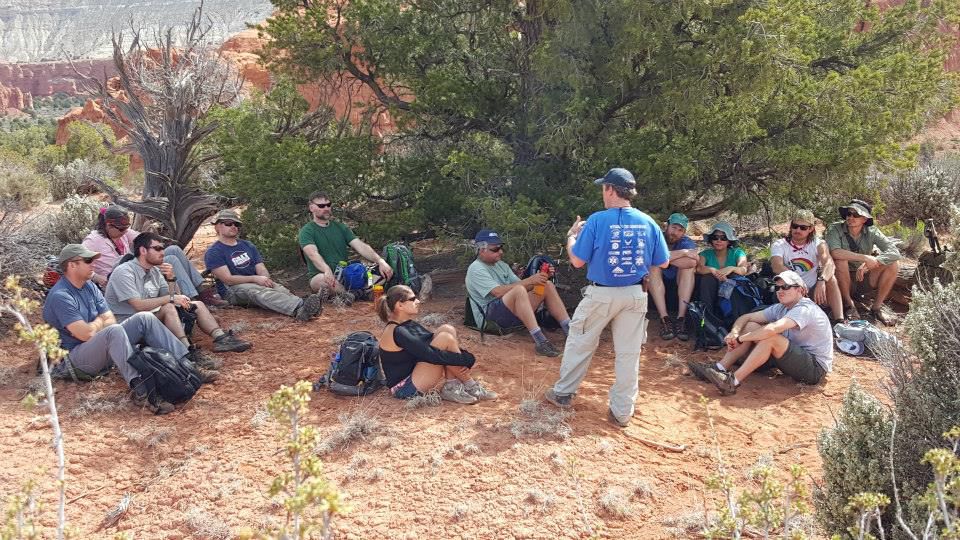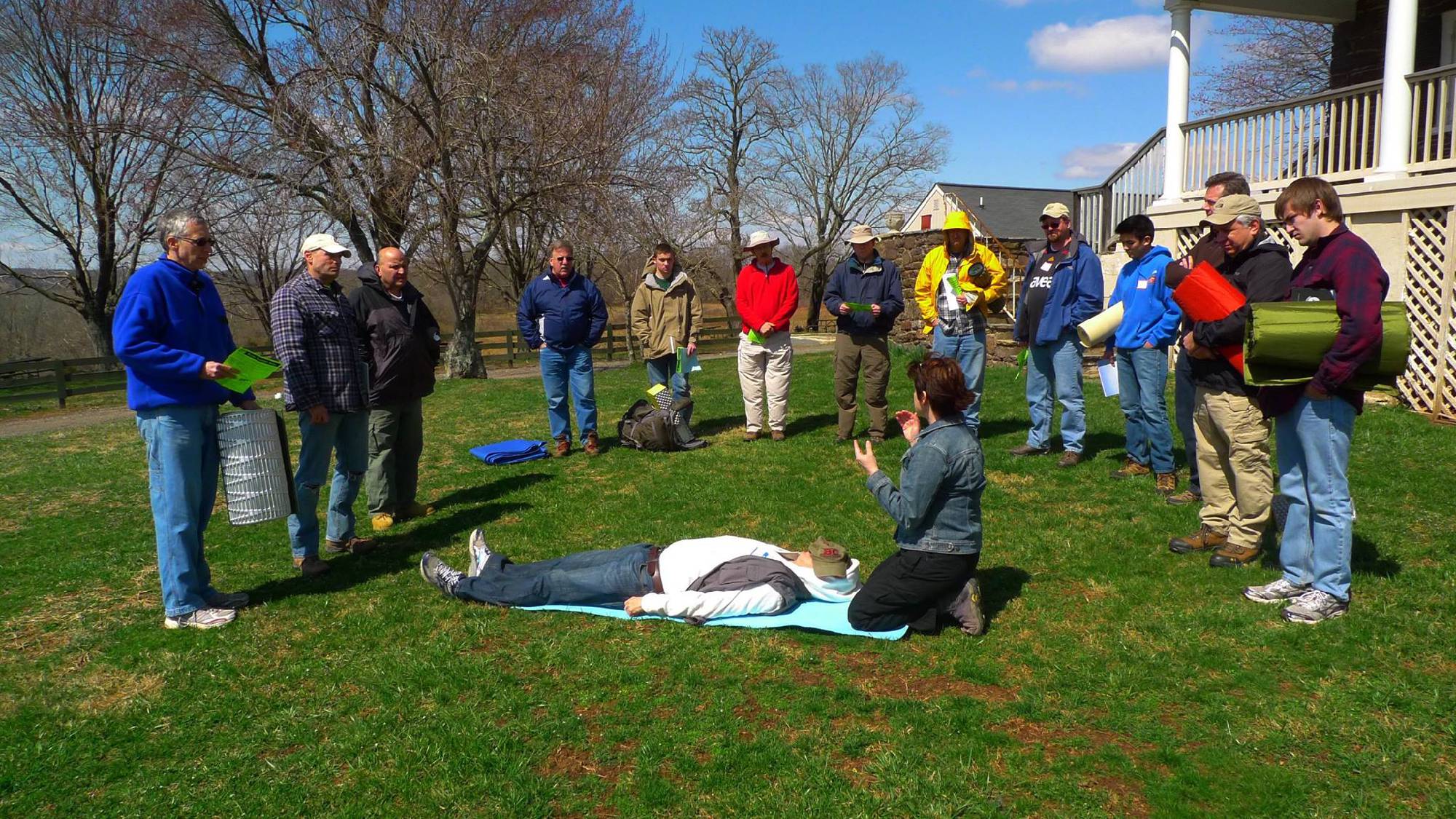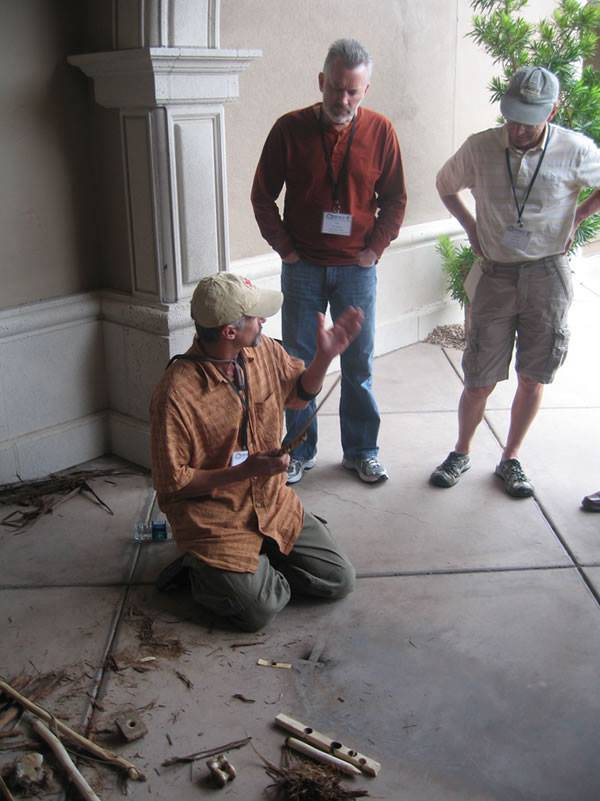This position paper was developed by the Wilderness Medicine Education Collaborative, an industry coalition of schools. It does not necessarily represent the position of the Wilderness Medical Society.
People who live, work, travel, and recreate in the outdoors have specialized medical training needs that are not adequately met by traditional first aid programs. They care for patients in remote locations, in challenging weather, with questionable communication and support, limited equipment, and may need to make independent decisions on patient care and transport. As a result, medical and outdoor specialists developed wilderness medicine courses in an attempt to meet these needs. Initially, the content for these courses was written independently and was opinionbased. Subsequently, the content has evolved based on evidence and experience. This process has led to a consensus about content and scope of practice (SOP) among the training organizations whose directors created the document.

History of WFA and WFR SOP Development
Around 2005, numerous open public sessions at several annual WMS meetings had discussions on aspects and areas of SOPs for Wilderness First Aid (WFA) and Wilderness First Responder (WFR). All who chose to participate were encouraged to be there and speak. While many were interested, only a few signed on to work on the WFA project of five years and the following five years on the WFR project.
An informal group of wilderness medicine course providers emerged and have been working diligently and collegially to discuss course content for the WFA and WFR programs. The group consists of: Aerie, Desert Mountain Medicine, NOLS Wilderness Medicine Institute, SOLO, Wilderness Medical Associates, Wilderness Medicine Outfitters, and Wilderness Medicine Training Center.
We are interested in content that is practical and realistic for our students. Our discussions range from specific techniques such as femur traction splints to broader discussions on the relevance of mental health and medical topics in these courses. We engage in these conversations as we lead, interact, recreate, and serve with those who seek wilderness medicine training; the outdoor recreationist, trip leaders, search and rescue groups, disaster response teams, humanitarian relief organizations and wilderness education programs. By participating in committees and attending meetings and conferences, we network with groups such as the Wilderness Risk Managers, American Red Cross, Boy Scouts of America, Association of Outdoor Recreation and Education and the National Association of EMS Physicians, as well as the many outdoor organizations that seek relevant and practical wilderness first aid training for their participants and trip leaders. The results of these collegial conversations have been increasing consistency in curriculum content and the writing of two documents describing, in this group’s opinion, broad guidelines for minimum curriculum content for WFA and WFR. The WFA document was published in 2010 and revised in 2013 with publication in the Wilderness and Environmental Medicine Journal.
Everyone who volunteered for the current draft WFR SOP was accepted to work on the project, which was done with a multitude of discussion by emails and phone calls. Numerous drafts were sent out and reviewed. Those who felt strongly on a point were heard in detail. Some points were agreed to in a cooperative manner in order to keep the project moving forward.
Tremendous courtesy, civility, patience, and restraint to come to agreement was shown by all, which is more notable realizing that they are all competitors working to set a higher medical educational bar for the thousands of students they have served and will serve in the future.

Photo provided by the Center for Wilderness Safety - Curriculum director Jennifer Kay, teaching a Wilderness First Aid course in Leesburg, VA
Important to many is a summary of the composition and background of the writers who are directors of the seven Wilderness Medicine schools. Among them, they have sixteen college/university degrees consisting of two physicians, one registered nurse, three Masters degrees, five Fellows of the Academy of Wilderness Medicine, and one Master Fellow of Academy of Wilderness Medicine. Seven have EMT training, ranging from Basic to Paramedic. Six have extensive
emergency medical service background. All have search and rescue background. Five have an extensive outdoor professional background. Seven have trip leader/guide/trip medic background. Between them there are over 200 years of experience teaching wilderness medicine. Four of these schools were teaching wilderness medicine and giving field care prior to the founding of the WMS.
Several states actually recognize WFR training. Many states and branches of federal government require WFR training for guides, as well as the majority of outdoor companies and associated professional organizations and association.
The WFR document was first published in draft form in 2010 and was revised out of draft form in January 2016. Each of the schools will host copies on their website as well as at a non-school site . Due to the length of the work, it was decided that including the full work in this article would be too long, so this public viewing site method was chosen for distribution. The WFR SOP has been submitted to the Library of Congress for official United States copyright.
The WFR documents represent our consensus opinion on the desired program content, as did the earlier WFA published in the WMS Journal. There is no intent that these are a binding national standard. Our intention with these documents is to assist the lay public, outdoor program administrators, and other consumers of wilderness medicine courses in their choice of an appropriate course and credential level. It is also to inform the ongoing discussions on wilderness medicine programs and systems.
[NOTE: For those interested in more WFR history of standards, it is noted a group of more than two dozen schools submitted their curriculums in a minimum standards effort started by Outdoor Recreation Collation of America in 1995 that came to be known as PETSAC. Four of those schools still doing this work with the current group are SOLO, NOLS/WMI, WMA and WMO. This early work was collated and submitted by SOLO to the WMS Journal where it was published in 1999.]

Definitions for SOP
The draft WFR SOP describes the intended audience, the minimum guidelines for what a Wilderness First Responder (WFR) should know, what decisions they should make and what skills they should be able to perform. Because student and/or organizational needs can vary by location, population, and experience, the SOP provides for a minimum or core requirement and acceptable electives topics and skills. Ultimately it is the responsibility of each organization choosing medical training to understand its own individual and institutional needs. This document does not delve into detailed descriptions of signs and symptoms, nuances of technique or evacuation guidelines. These are described elsewhere in the emergency care and wilderness medicine literature.